Abstract
Hänninen, H. (1971).Brit. J. industr. Med.,28, 374-381. Psychological picture of manifest and latent carbon disulphide poisoning. A battery of psychological tests was administered to 50 viscose workers with carbon disulphide (CS2) poisoning, 50 viscose workers exposed to CS2 without known poisoning, and 50 workers not exposed to CS2. There were large and statistically significant differences between the group means of the poisoned and the unexposed group in most performances involving speed, vigilance, manual dexterity, and intelligence. The exposed group also showed impairment, but the changes were less severe. CS2 thus apparently affects the working capacity and sociability of exposed workers earlier than can be diagnosed by purely medical means.
The differences between the groups were further studied by discriminant function analysis. The poisoned group could be reliably discriminated from the unexposed group. Of the unexposed and poisoned subjects, 91% were correctly classified in the proper group. The exposed workers could not be discriminated from the poisoned subjects with the same reliability owing to the effects of latent CS2 poisoning in the former group.
Analysis of the discriminant functions further suggests that the syndromes of latent and manifest CS2 poisoning differ not only in intensity but also in quality. Clinically manifested poisoning is characterized by lowered vigilance, diminished intellectual activity, diminished rational control, retarded speed, and motor disturbances, whereas traits indicative of depressive mood, slight motor disturbances, and intellectual impairment are characteristic of latent poisoning. This syndrome is probably much more common than was hitherto believed.
Full text
PDF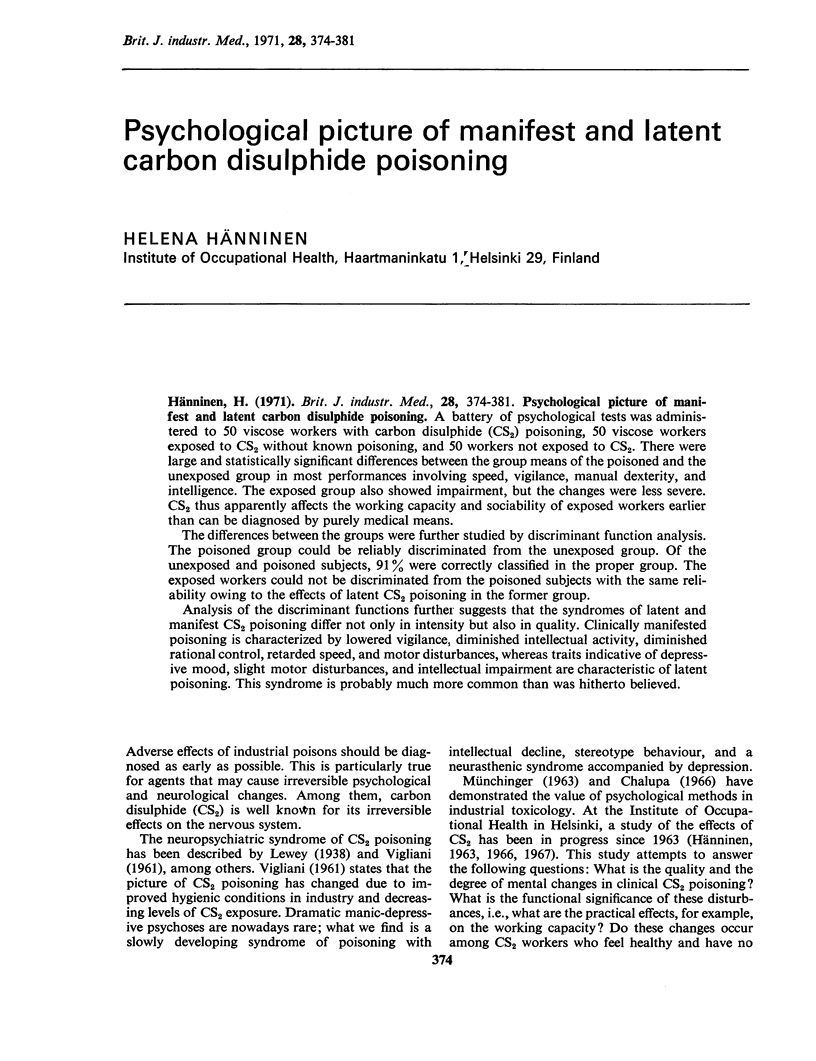
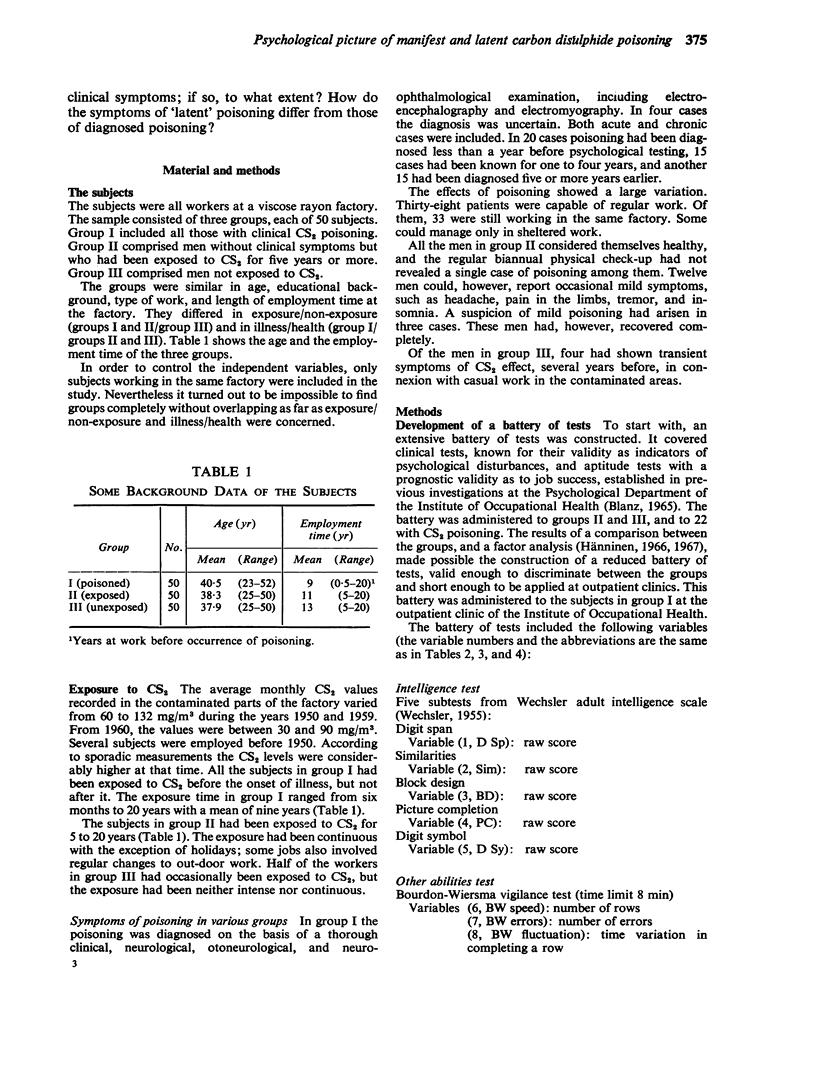
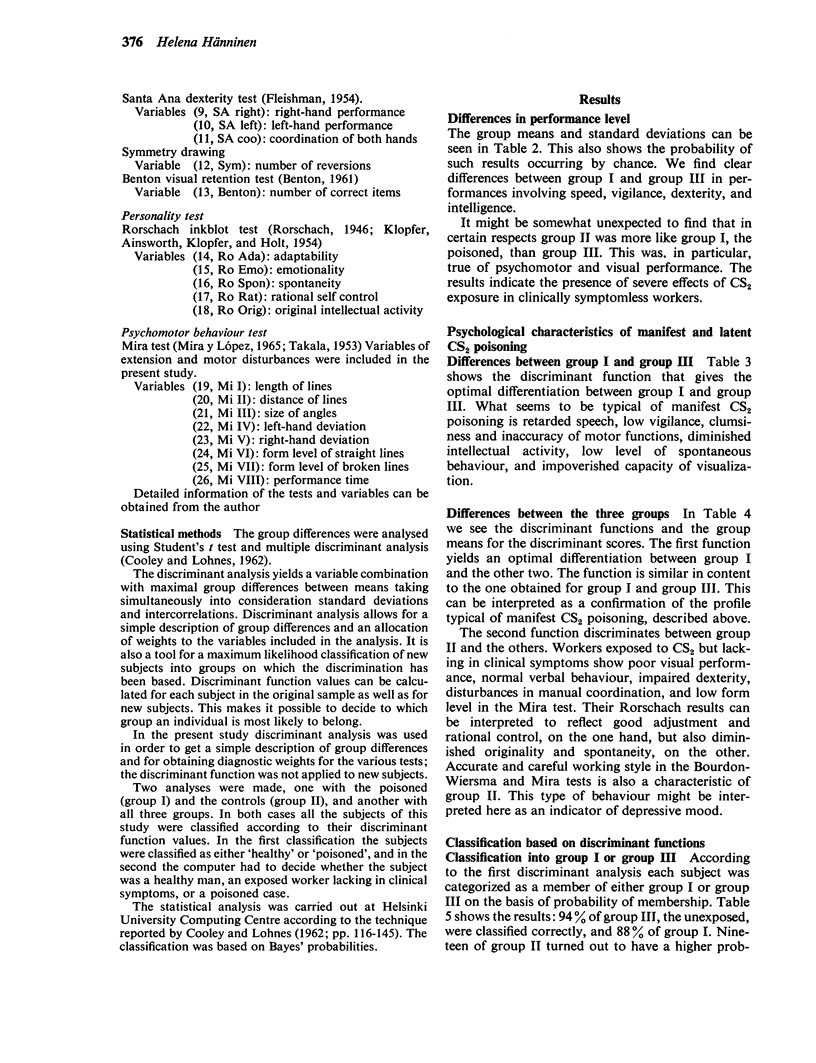
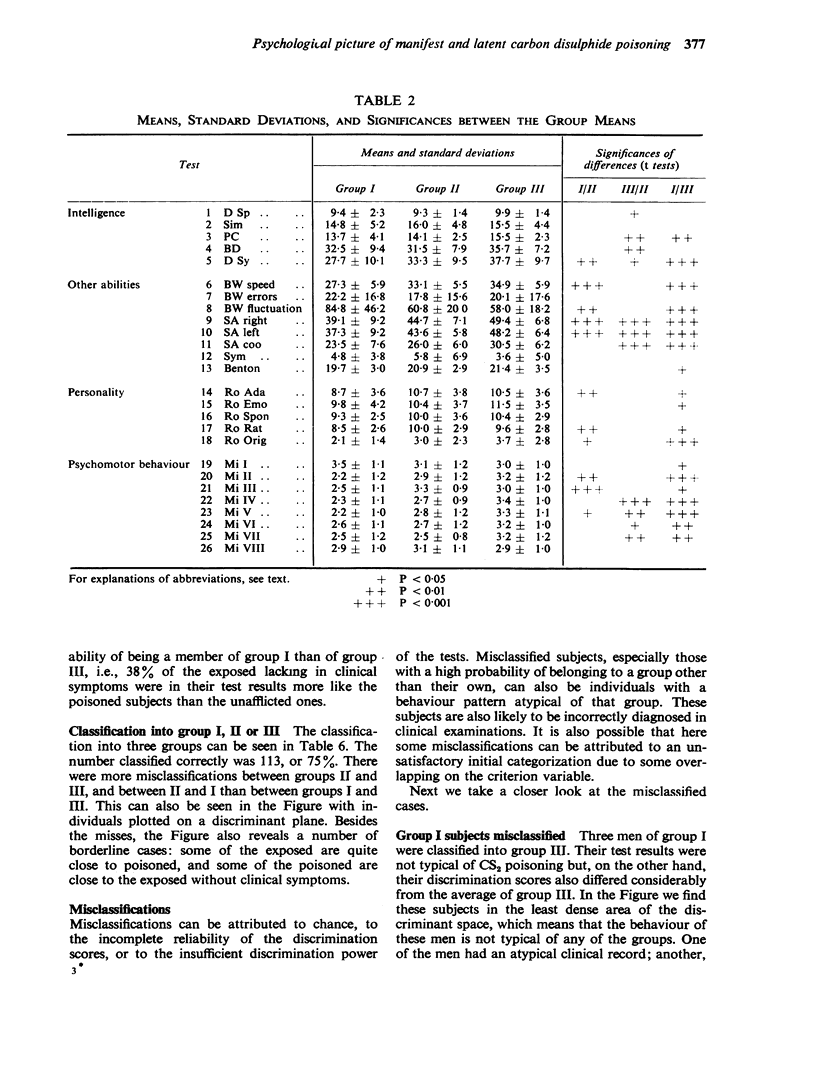
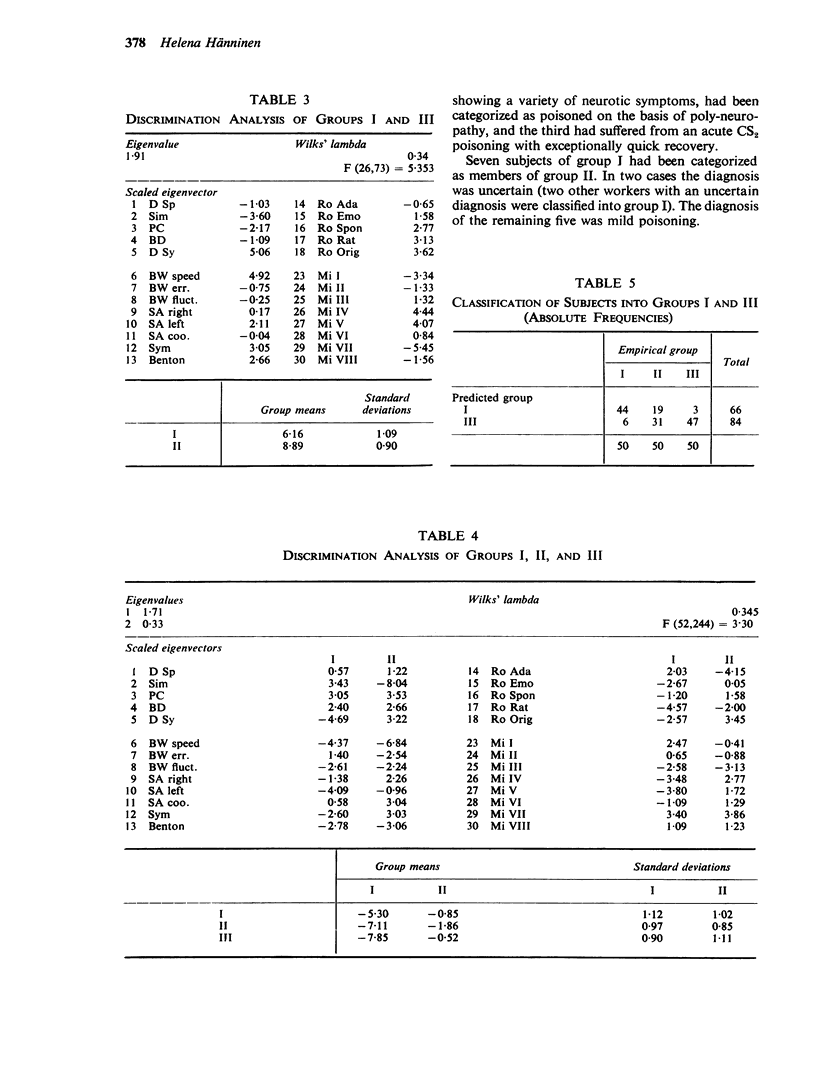
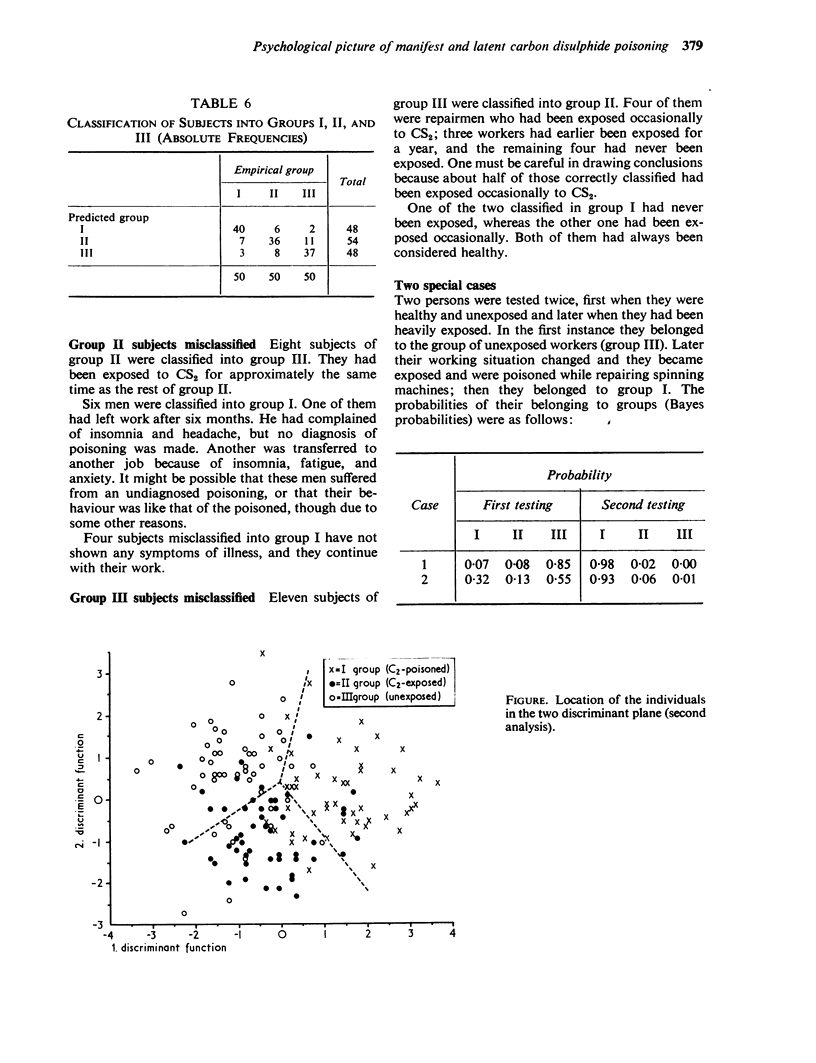
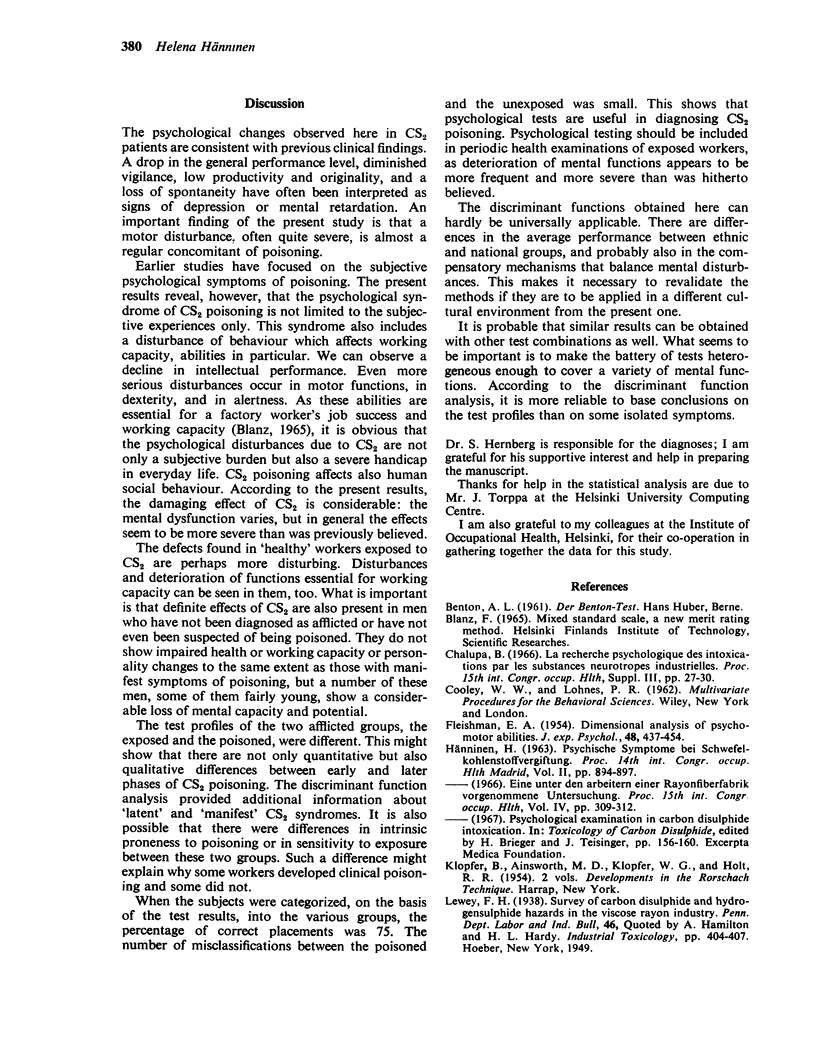
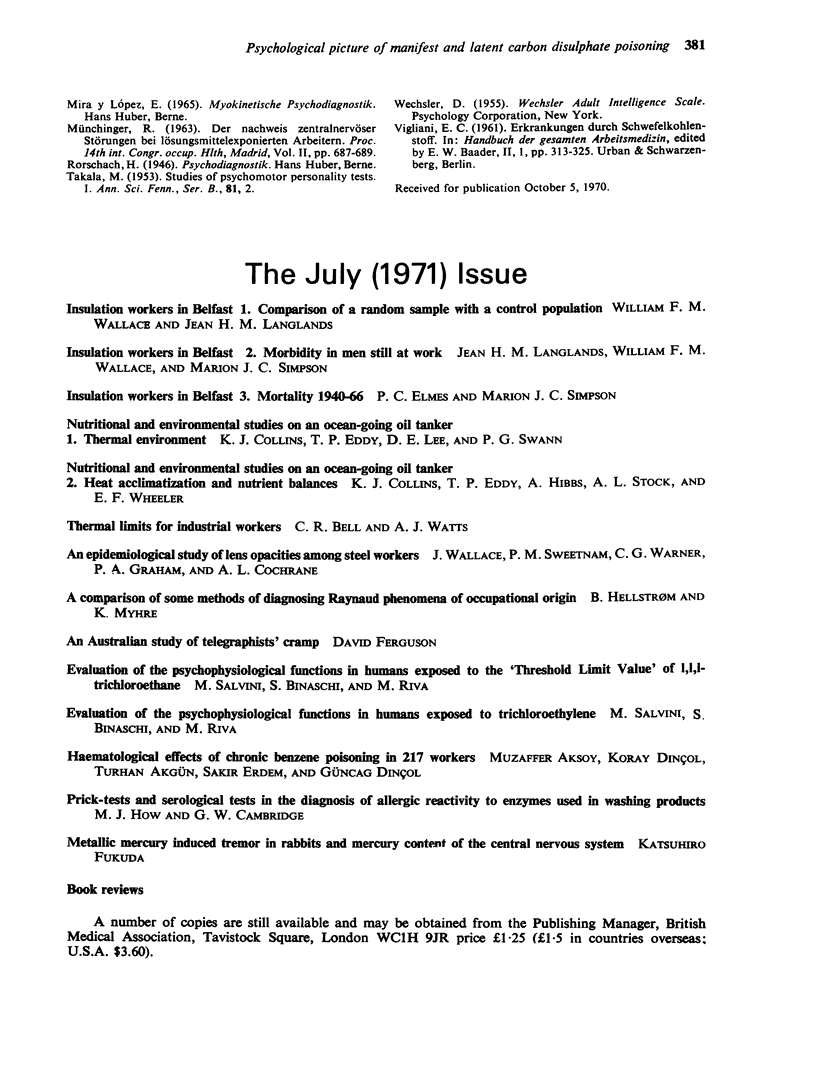
Selected References
These references are in PubMed. This may not be the complete list of references from this article.
- FLEISHMAN E. A. Dimensional analysis of psychomotor abilities. J Exp Psychol. 1954 Dec;48(6):437–454. doi: 10.1037/h0058244. [DOI] [PubMed] [Google Scholar]


